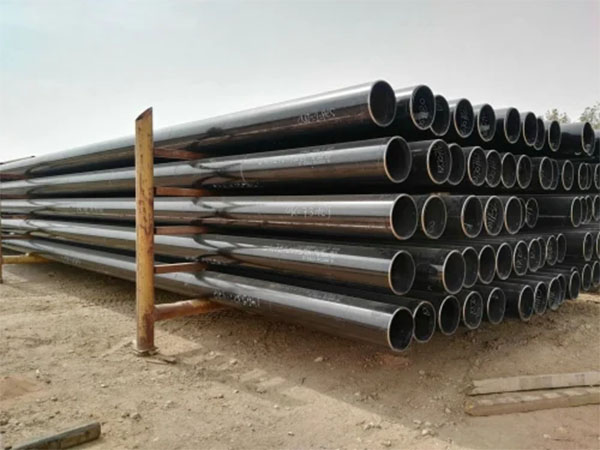Carbon steel pipes are made of iron and carbon as the main components, featuring high strength and excellent pressure resistance. Black steel pipes, on the other hand, are black pipes with a layer of natural oxide scale (or "blackening" treatment) retained on the surface of ordinary carbon steel pipes. They each have their own characteristics in terms of definition, production process, surface condition and application fields. The following is a comparison from several aspects:
1. Basic definitions and surface characteristics
Carbon steel pipe: Its main components are iron and carbon, with a carbon content of approximately 0.05% to 2.1%. It can be formed through hot rolling, cold rolling, seamless or welded processes. The surface has a silver-gray metallic luster, and anti-corrosion treatment can be carried out on the steel pipe as required.
Black steel pipe: Essentially, black steel pipe is also carbon steel, but the difference lies in that a black iron oxide surface layer is formed during the manufacturing process, thus giving the steel pipe a black appearance.

2. Materials and Manufacturing processes
Carbon steel pipes: Carbon steel pipes can be classified into three grades based on their carbon content, namely low carbon steel, medium carbon steel and high carbon steel. Moreover, carbon steel pipes all contain small amounts of elements such as manganese and silicon. Carbon steel pipes have various production methods, including seamless pipes, spiral welded pipes, straight seam welded pipes, etc.
Black steel pipe: Generally, ordinary carbon steel is processed into shape and then undergoes "blackening" treatment to form an oxide layer on the surface. Sometimes, oil coating can also be used for protection. It is usually produced by hot rolling or welding.
3. Performance comparison
Carbon steel pipes: The properties of carbon steel pipes vary with the carbon content. The higher the carbon content, the greater the strength and hardness of the steel, such as medium and high carbon steel. However, an increase in carbon content will also reduce the ductility and weldability of steel. When welding, attention should be paid to the welding temperature and preheating in advance.
Black steel pipe: The material is generally low-carbon steel, with relatively low hardness, but it has strong ductility and welding performance, and is not prone to brittle cracking in low-temperature environments.
4. Corrosion resistance comparison
Carbon steel pipes: They have low corrosion resistance and are prone to rust when exposed to air, humidity or corrosive environments for a long time. Anti-corrosion treatment can be carried out on them by applying coatings (such as FBE, 3PE/PP, galvanizing, etc.) on their surfaces. The coatings can effectively protect the steel pipes from erosion.
Black steel pipe: It has a certain degree of corrosion resistance, and the oxide layer on the surface can resist the invasion of corrosive media. However, its anti-corrosion performance is inferior to that of galvanized pipes and it is suitable for indoor use or non-strongly corrosive environments.
5. Cost comparison
Carbon steel pipes: Due to the relatively low price of the material, the cost of carbon steel pipes themselves is also relatively low. However, if they undergo galvanization or other anti-corrosion treatments, the cost will also increase accordingly.
Black steel pipes: The manufacturing process is relatively simple and the price is relatively low, but they require long-term maintenance and have a high replacement frequency, which may increase the total cost.
Summary and comparison
Carbon steel pipes: High strength, carbon content and heat treatment can be adjusted according to application, resistant to high pressure and high temperature, suitable for industrial fields. However, additional anti-corrosion treatment is required.
Black steel pipe: Essentially, it is a type of carbon steel without coating. The surface naturally oxidizes to form a black oxide scale. It has low cost and good weldability, and is suitable for low-pressure gas supply or fire protection systems, etc. However, its corrosion resistance is relatively weak, especially not suitable for drinking water systems.
